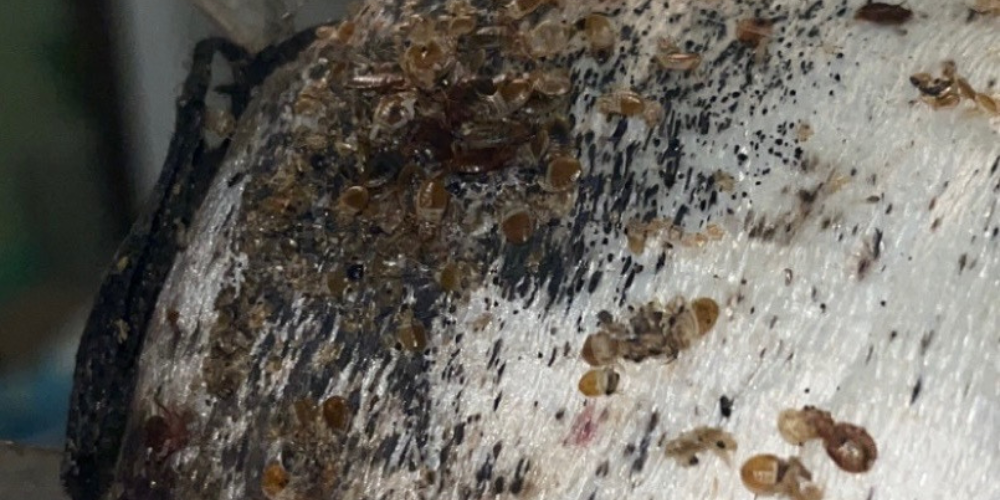If you’ve been asking, “how do I find bed bugs in my home?”, we have you covered. In this post we are going to learn 5 steps you can do to prevent these pests from making their way into your home, the early signs of activity, and where you should look to find the start of an infestation.
Follow these five key steps to effectively deal with bed bugs:
- Regular Inspections: Frequently check your bedding, furniture, and luggage for signs of bed bugs, especially after traveling. You can use a flashlight – ( https://amzn.to/3TjmOfR ) or UV flashlight – ( https://amzn.to/4dwbpkA )
- Protective Covers: Use bed bug-proof encasements on mattresses, box springs, and pillows to prevent infestations. Bed Encasements – https://amzn.to/4dKXIxY
- Minimize Clutter: Keep your home, especially bedrooms, clutter-free to eliminate hiding spots.
- Be Cautious with Secondhand Items: Inspect and thoroughly clean any secondhand furniture or clothing before bringing them into your home.
- Use Furniture Interceptors: Place interceptors under bed and furniture legs to trap them and monitor for any potential infestations. Interceptors – https://amzn.to/4dsEGfX

How to Inspect for bed bugs?
Inspecting involves a thorough examination of common hiding spots. Here’s how to do it effectively:
1. Check the Bed
- Mattress Seams and Edges: Lift the mattress and inspect the seams, edges, and any tags for bed bugs, which look like tiny, reddish-brown insects. Also, look for small black or reddish-brown spots (bed bug feces) or shed skins.
- Box Spring: Check the box spring, especially in the folds of fabric and along the wooden frame. Bed bugs often hide in the cracks and crevices of the box spring.
2. Inspect the Headboard and Bed Frame
- Behind and Beneath the Headboard: Carefully examine the headboard, particularly the back and the area where it meets the wall. Bed bugs often hide in these cracks.
- Joints and Crevices of the Bed Frame: Inspect all joints, screws, and corners of the bed frame, as bed bugs can squeeze into these tight spaces.
3. Examine Nearby Furniture
- Upholstered Furniture: Look at the seams, tufts, and crevices of upholstered chairs, sofas, and cushions near the bed.
- Nightstands and Dressers: Pull out drawers and inspect the corners, joints, and undersides.They can also hide in the cracks of wooden furniture
4. Look at the Walls and Baseboards
- Baseboards and Electrical Outlets: Check along the baseboards, especially where they meet the floor, as well as around electrical outlets and light switches. They can hide in these areas, especially if they have spread beyond the bed.
- Wall Hangings and Picture Frames: Inspect behind picture frames, mirrors, and any wall hangings for signs of activity.
5. Inspect Luggage and Personal Items
- Luggage: If you’ve recently traveled, inspect your luggage carefully, especially the seams, pockets, and zippers. Bed bugs often hitch a ride home in suitcases.
- Clothing and Other Personal Items: Check clothing, bags, and other personal items that may have been exposed to bed bug-prone areas.
Early Signs of Bed Bugs
- Live Activity: Small, reddish-brown insects about the size of an apple seed.
- Fecal Spots: Small, dark, and smudgy spots, often found in clusters.
- Shed Skins: Translucent exoskeletons shed as they grow.
- Eggs and Eggshells: Tiny, white, and about 1 mm in size, often found in clusters.
If you find any signs during your inspection, it’s important to act quickly to prevent a full-blown infestation.


No responses yet